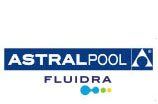Our Frequently Asked Pool Questions Answered
-
WHAT IS THE RECOMMENDED DAILY FILTRATION TIME?
The required operating time for your filtration system varies throughout the year as long periods of heavy use and hot weather require longer filtration. If salt chlorinated the operating time is increased in hotter weather to produce more chlorine as the higher water temperature and increased sunlight break down the chlorine in the water more rapidly.
On average in the summer months it is recommended that your filtration system runs for at least 6 hours a day, if salt chlorinated the usual operating time required to sanitise your pool can be 8-10 hours per day.
-
HOW DO I GET RID OF A GREEN ALGAE BLOOM?
Brush any visible wall algae into the water and superchlorinate the pool with liquid or granular chlorine, running the filtration for at least 6 hours afterwards. If your pool water becomes cloudy and does not clear quick enough with normal filtration you may need to add a floccing agent to send all the suspended dead algae in the water to the bottom of the pool so it can vacuumed out to waste.
-
HOW DO I GET RID OF BLACKSPOT ALGAE?
Blackspot algae form protective layers to prevent them from being killed off by the chlorine in the water, the longer it has been there the longer it can take to get rid of.
Start by making sure your pool water is properly balanced, switch off the pool pump and give the blackspot a scrub with your pool brush. Add Granular Trichlor or Granular Dichlor directly over the areas with the blackspot algae and leave overnight.
A re-brushing or vacuum to waste the next the day could finish the job, however really stubborn blackspot may require sustained brushing and re-treatment.
Using a copper based algaecide on a routine basis can prevent or delay bad blackspot algae from forming again.
-
WHAT TO CHECK IF MY WATER TESTING INDICATES LOW FREE CHLORINE?
If pool water testing indicates low or no free chlorine make sure your other levels are balanced - especially stabiliser. If these levels are out the chlorine being added does not last long. If these levels are good, the quantity or frequency of your chlorine dosing may need to be increased, or if saltwater chloinated then the running time or output may need to increased.
-
HOW DO I CLEAN THE ELECTROLYTIC CELL ON MY SALT CHLORINATOR?
Electrolytic cells operates efficiently only when it is clean. To check your cell for cleanliness, disconnect the mains power supply, unscrew the nut on the cell housing and remove the electrode. A 'dirty' electrode will have visible deposits of calcium and other matter built up on it.
Salt cells should initially be inspected on a weekly basis to determine the rate of calcium build up, this will determine the cleaning cycle necessary for your pool (generally monthly).
To clean your cell, after removing it from the housing immerse in cell cleaner liquid obtainable from your local pool shop for five to ten minutes until the cell appears clean. Agitating the cell while immersed will speed up the process, the less time the cell is spent in the liquid the better. Rinse with fresh cold water before reassbling the cell into the housing.
-
WHAT DO I DO IF I AM GETTING EXCESSIVE BUILD-UP ON MY SALT CELL?
Calcium hardness levels should be kept to between 100 and 250 ppm. Levels higher than the recommended level will result in a less efficient cell, a more frequent need for cleaning and a chance the cell will fail prematurely.
To minimise the chances of high hardness levels minimise or avoid the use of chemicals containing calcium, especially 'Hardness Increaser' and calcium-based granular chlorine.
To maximise cell life we recommends the use of 'Salt Cell Protector' at the beginning of each swimming season or as required.
-
WHAT CAN I DO IF MY POOL CLEANER GETS STUCK IN A PARTICULAR SPOT IN THE POOL?
• Make sure the swivel is moving freely.
• Adjust the hose length by adding or removing a section of hose.
• Make sure the return to pool water flow is not interfering with the movement of the pool cleaner.
• Attach a deflector ring on to the pool cleaner swivel.
-
WHAT TO DO IF MY POOL CLEANER DOES NOT MOVE OR IS MOVING VERY SLOWLY?
• Check pool filter. Backwash or clean if necessary to improve water flow which will increase suction.
• Check skimmer and pump baskets and remove leaves and other debris.
• Make sure pump is filling up properly and that the water coming back into the pool is strong. If not this could indicate a blockage and may require a visit by one of our technicians.
Still Have Questions?
Contact our friendly team today if you need assistance; we’re here to answer any questions you may have!
Browse Our Website
Contact Information
Business Hours
- Mon - Fri
- -
- Saturday
- -
- Sunday
- -
Public holidays: Closed











After Pay
ABN: 90 092 151 418
Contractor License: 9821C 11948C










